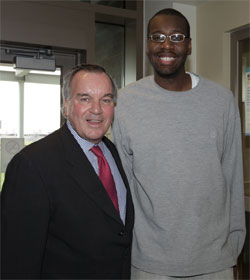Keeping autism and other disability services a top priority
by Beth Finke
During his first months in office, President Obama has already signed the State Children’s Health Insurance bill (a top priority for Easter Seals) and designated funds in the economic stimulus package to go directly to programs that improve the lives of those with autism and other disabilities.
Easter Seals President and CEO Jim Williams visited the White House recently to personally thank President Obama for all that he’s done for people living with autism and other disabilities. While he was there, he also urged the president to keep the needs of individuals living with autism and other disabilities a top priority in health care reform.
Millions of people live with a disability and that number increases every single day. Easter Seals works hard to reach as many people as we can, but our efforts alone are not enough to help every person in need of disability services. This is why Jim Williams urged President Obama to keep the needs of individuals living with autism and other disabilities a top priority in health care reform.
You can contact the White House, too — click here to thank President Obama for his work
and to ask him to continue to prioritize the needs of the millions of people who live with autism and other disabilities.







 In all the excitement of meeting White Sox players last week, and going to that White Sox game, I forgot to mention one very important thing in
In all the excitement of meeting White Sox players last week, and going to that White Sox game, I forgot to mention one very important thing in 